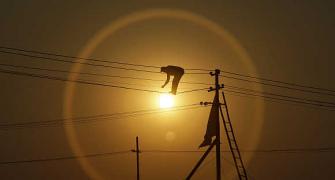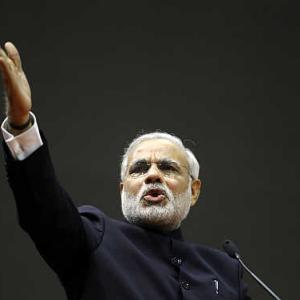The Indian government and RBI must keep foreign equity investors happy and avoid crushing growth expectations, notes Akash Prakash.
The new governor of the Reserve Bank of India (RBI) and everyone in the government have a very tough few months ahead. They have to walk a thin line between defending the rupee and not crushing growth.
What the RBI has tried to do so far seems to be a classic monetary policy defence of the rupee: force rates to go up, squeeze liquidity and make it expensive for market participants to hold non-rupee assets; and change expectations so that exporters do not hold back dollars and importers stop rushing to cover. Many commentators have criticised the RBI for going down this route, arguing that it is pointless to try and defend the currency given the structural current account deficit. They also think the costs of this approach are too high in terms of sacrificing economic growth. I think the RBI had frankly no choice — it had to try and break the vicious circle of expectations that were building up around the currency.
Many commentators have criticised the RBI for going down this route, arguing that it is pointless to try and defend the currency given the structural current account deficit. They also think the costs of this approach are too high in terms of sacrificing economic growth. I think the RBI had frankly no choice — it had to try and break the vicious circle of expectations that were building up around the currency.
Many sensible market players were calling for the rupee to almost immediately move to a new range of 65 before the RBI stepped in. Such a move would have driven inflation higher, caused at least one large industrial group to totter, and forced the fiscal arithmetic to go haywire.
This could have further spiralled into a ratings downgrade, created mayhem and forced more capital to flee our financial markets. We had to break the vicious negative spiral that was developing.
While this is a textbook response to currency weakness, it has not yet worked in stabilising the rupee or market expectations. Market players do not seem convinced that the RBI has the desire to see this monetary policy defence through to its logical conclusion.
The RBI’s initial hesitation in accepting higher yields across the yield curve and the dovish language after the policy meeting were all signs – at least to market players – that maybe the RBI had no stomach to really fight the trend. These measures will, therefore, probably have to be in place for longer than expected — or another, tougher set of measures will have to be announced to convince the market.
The reality is that there is little the government can do in the short term, besides attracting capital flows, to fill the current account gap. The current account deficit in the short term will not fall drastically — we will still need to fund a $75-80 billion hole. Import restrictions, duty hikes on gold, restarting iron-ore mining, ramping up coal production and so on only impact the current account deficit with a time lag.
Similarly, whatever the government does in terms of its foreign direct investment (FDI) policy will again take 12 to 18 months to deliver inflows. FDI does not turn on a dime. In the short term, we have to attract financial flows; there is no alternative.
It is here that India is different from most other markets. We are far more dependent on equity inflows than on debt. We have opened up our local debt markets only very recently and in a limited way — unlike our equity markets, which were opened to foreign institutional investors (FIIs) in 1993. We have a stock of FII equity investments worth more than $225 billion, while the amount of FII money in the debt markets is $30-35 billion.
 If the RBI is successful in mounting a defence of the rupee through monetary action, then, as expectations on the currency stabilise, debt inflows should once again start capturing the much higher yields available in India. However, they are unlikely to be of a magnitude that can solve our funding needs. We do not want to attract debt flows worth $30 billion.
If the RBI is successful in mounting a defence of the rupee through monetary action, then, as expectations on the currency stabilise, debt inflows should once again start capturing the much higher yields available in India. However, they are unlikely to be of a magnitude that can solve our funding needs. We do not want to attract debt flows worth $30 billion.
If the US Federal Reserve’s tapering gets accelerated, this strategy will not work. Debt flows into emerging markets will be negative, and India will be unable to fight this headwind.
So we need to attract equity inflows to balance our funding. This is the essential dilemma — you need to keep policy tight enough to build credibility, but not so much as to hit growth and drive equity flows away.
The problem with rising rates, of course, is the impact they will have on the economy and growth. Equity investors invest in a market for capital appreciation.
This can come through earnings per share growth or price-to-earnings multiple expansion. Earnings growth for a market has a high correlation with economic growth (stock market performance has no correlation, but earnings growth does), and thus any economic slowdown will damage earnings and reduce expected returns. The price-to-earnings multiple also has a negative correlation with rising rates. The markets are unlikely to rise and attract flows with a compressing multiple.
India has attracted more than its share of emerging market equity inflows in the past few years. Investors come to India for growth. If they feel growth will be damaged for a significant period, you run the risk of equity outflows, which can easily swamp potential debt inflows. There are concerns around the whole emerging market asset class, given its huge underperformance compared to the S&P 500.
 India has continued to benefit owing to a lack of choice among the equity markets in the emerging economies, but this will not continue forever. The way to counteract this equity outflow risk is to build confidence in the longer-term growth prospects of the country, thereby forcing investors to look through any short-term growth shocks caused by rupee defence. We need investors to once again focus on the country’s potential and ignore the current reality, which is likely to get worse.
India has continued to benefit owing to a lack of choice among the equity markets in the emerging economies, but this will not continue forever. The way to counteract this equity outflow risk is to build confidence in the longer-term growth prospects of the country, thereby forcing investors to look through any short-term growth shocks caused by rupee defence. We need investors to once again focus on the country’s potential and ignore the current reality, which is likely to get worse.
The way to build this longer-term confidence is to focus once again on second-generation reforms across all factors of production and in our governance and institutional framework. There is no getting away from this type of fundamental reform.
Anything else would be just band-aids, which will only postpone the problems. If we cannot take the hard decisions today, when we are faced with external vulnerability, then when will we do so? Global investors were, till very recently, convinced that our economic slowdown was cyclical and that we would bounce back. They are now beginning to doubt our ability, absent new reforms, to get back to even seven per cent growth.
Combined with fundamental reform, we need to go to the International Monetary Fund and negotiate a standby facility, and get swap lines with the major central banks — as a way to build reserves, in case the markets turn dangerously volatile in the autumn as the Fed taper potentially begins.
This, accompanied with an NRI bond and foreign currency debt issuance by public sector undertakings, should bolster our reserves by $25-30 billion. That is the absolute minimum we need to rebuild confidence.
There are other simple steps, such as getting India’s weight up in all the relevant indices tracked by investors. Some simple steps taken by the government can force a weightage change in the MSCI equity indices to properly represent India’s economic size, which can trigger billions of inflows.
Akash Prakash is fund manager and CEO of Amansa Capital










